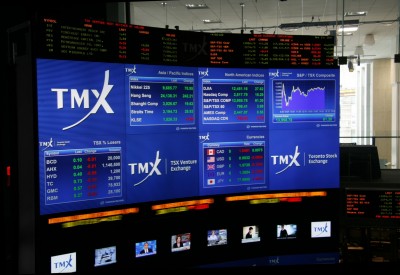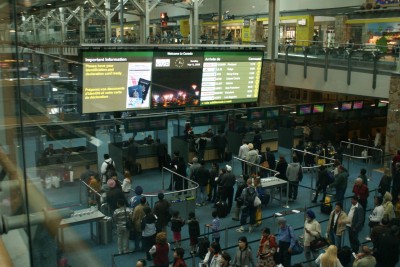By Jeff Collard
As digital signage has developed into a mature medium, it has been used in new and unusual ways. Some companies, for example, use digital display systems to disseminate vital information about themselves to their employees, enabling them to make better, faster and smarter decisions at a glance. Such applications depend on unlocking the value of data-driven visual and experiential content to create a competitive advantage. In particular, the ability to turn ‘big data’ into actionable information is helping shape many business decisions today.
The Internet of things
The way people interact with information is changing, driven by consumer-oriented technologies. In the case of digital signage, the rapid growth of high-definition (HD) flat-panel televisions for consumers has resulted in display prices dropping, making the medium more affordable and accessible to virtually any commercial, corporate or institutional organization.

TMX, which owns and operates the Toronto Stock Exchange (TSE), runs live news and real-time financial data on its digital signs.
There has, of course, been an explosive growth of other digital devices in recent years, too. In 2014, estimates suggest seven billion people around the world will use some two billion computers, five billion smartphones and 10 billion other ‘smart devices.’
While this latter term may not be familiar, smart devices—i.e. those that can automatically communicate with each other—are all around. They are in homes, cars, offices and virtually everywhere else. Connected via the Internet, they are not only being remotely updated by their users, but also automatically sharing information with each other.
With this information freely moving across multiple devices in a new world of connected communications environments, online-connected digital signs are simply part of what British technology developer Kevin Ashton first described in 1999 as “the Internet of things.” In turn, this is dramatically changing how people interact with objects and each other.
The relationships between people and devices continue to evolve. As smart devices communicate with each other, they can provide users with more specifically customized experiences.
A connected experience
The Internet of things is not specific to any single industry or sector. Rather, it moves across vertical markets to provide a more connected experience for all of them.
The ability to tap into data in real time to support smarter business decisions and better customer experiences should drive further adoption of digital signage, but it will need to do so within the context of other devices and systems. As data becomes the ‘currency’ between devices and viewers, for example, cloud-based computing has become pivotal as the route for much of this data. So, digital signage communications strategies need to define a role for the cloud to play.
This does not necessarily mean all digital signage should be based on software-as-a-service (SaaS). Rather, as cloud-based computing forms part of most communications infrastructures in the future, systems will need to be able to support both premises- and cloud-based networks seamlessly.






